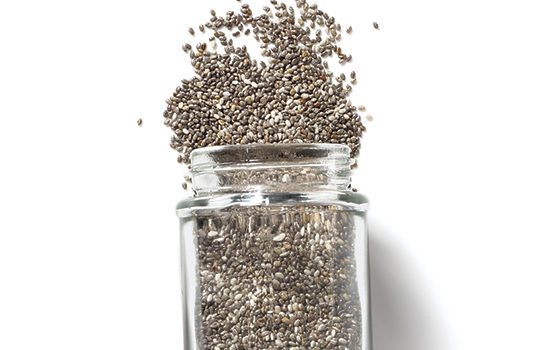Some background
Chia seeds have become quite popular in recent years and are worth learning about and incorporating to your diet for their versatility, easy use, and nutritional value. Originally from Mexico, they were grown and used by the Aztecs as a food of choice. They made a comeback in the 1990s and quickly garnered interest for their nutritional bounty.
Varieties
Chia seeds come from the chia plant, which belongs to the same family as mint and sage. The plant itself can grow to 1.5 m high with white and purple flowers. Each flower produces four tiny seeds. Seeds vary in colour from beige to very dark brown and are called respectively white or black chia seeds. The black chia seeds have a slightly bolder taste.
Nutritional aspects
Chia seeds are known primarily for their high fibre content. One serving of 11g or 11 mL (1 tbsp.) contains 4g of fibre, i.e., 15% of Health Canada’s recommended daily intake (the equivalent of about 2 slices of whole wheat bread).Their fat content mostly includes healthy fat—omega 3 polyunsaturated fat—and the seeds also contain protein, calcium, iron, and antioxidants.
Cooking
Used ground or whole, chia seeds are mostly eaten raw, but they can also be cooked without losing their nutritional value. They can easily be added to smoothies, yogurts, salads, cereal, or even cakes and muffins. An interesting recipe substitute, 15 mL (1 tbsp.) of chia seeds soaked in 45 mL (3 tbsp.) of water can replace one egg. Since the seeds swell in liquid, they serve as a natural thickener and are therefore also great for preparing cook-free jams or puddings. However, seeds should be rinsed before eating to remove any impurities.
Storage
Chia seeds keep up to two years whole in an airtight container away from light in the fridge, and up to one year ground. They can also be stored in the freezer. Try adding them to your favourite recipes!

